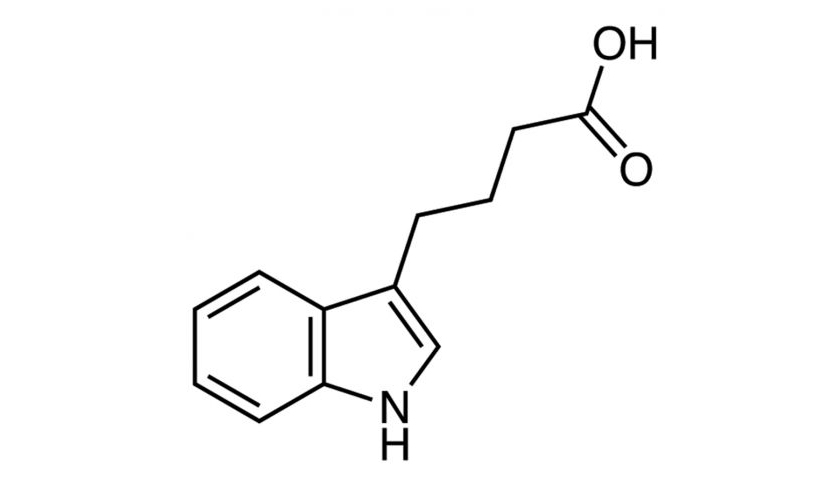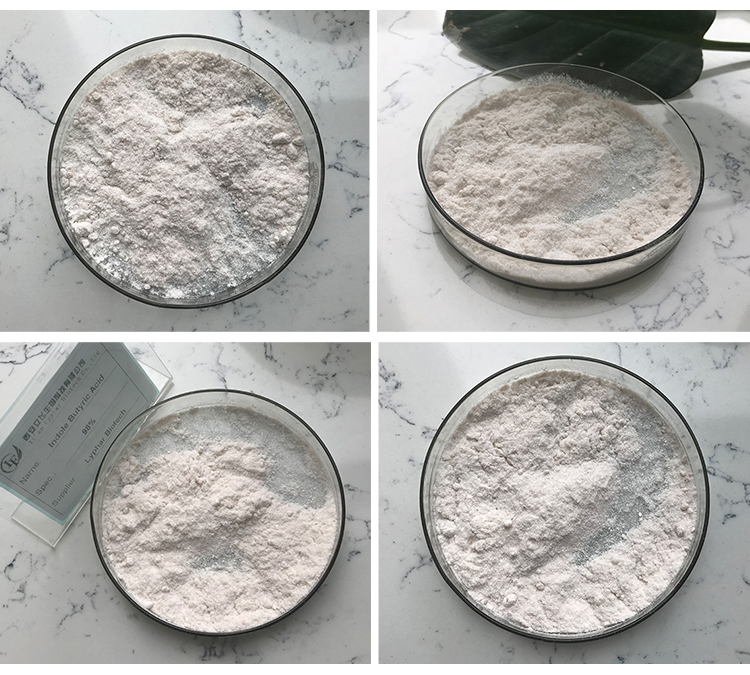Indole-3-butyric acid (IBA) is a plant hormone belonging to the auxin family. It is commonly used in horticulture to promote root development in cuttings. Here are some details about its chemical structure and physical properties:
Chemical Structure of Indole-3-butyric acid:
Chemical Formula: C12H13NO2
IUPAC Name: 1H-indole-3-butanoic acid
Structural Formula:

Physical Properties of Indole-3-butyric acid:
Molecular Weight: 203.24 g/mol
Melting Point: The melting point of IBA is around 125-128 °C (257-262 °F).
Solubility: Indole-3-butyric acid is sparingly soluble in water. It is more soluble in organic solvents like ethanol and dimethyl sulfoxide (DMSO).
Appearance: It is usually found as a white to light yellow crystalline solid.
Odor: It may have a slight odor.
Biological Activity:
Role in Plant Growth: Indole-3-butyric acid is a synthetic auxin that mimics the natural auxin indole-3-acetic acid (IAA), which is essential for various aspects of plant growth and development.
Rooting Agent: Indole-3-butyric acid is widely used as a rooting hormone in horticulture. It stimulates the formation of roots on plant cuttings, promoting the successful propagation of many plant species.
Transport in Plants: Like other auxins, Indole-3-butyric acid is involved in various physiological processes in plants, including cell elongation, tissue differentiation, and apical dominance.

Application in Horticulture:
Rooting Hormone: Indole-3-butyric acid is commonly used in powder, gel, or liquid formulations as a rooting hormone to encourage the development of roots in plant cuttings.
Propagation: It is extensively used in the propagation of ornamental plants, fruit trees, and vegetables to enhance the success rate of root formation in cuttings.
It’s important to handle Indole-3-butyric acid with care, following safety guidelines, as it is a synthetic compound with potential health and environmental risks if misused. Always refer to specific product labels and safety data sheets for detailed information.
